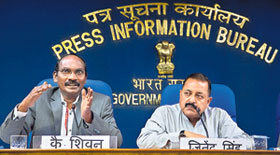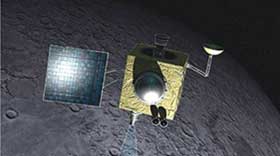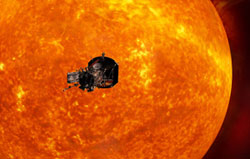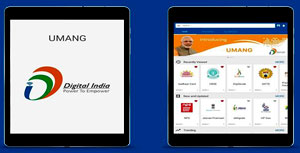August 2018 Science and Technology
Sakshi Education

- ISRO unveils plan of Gaganyaan programme to put Indian in space before 2022
The Indian Space Research Organization, ISRO, today unveiled India's Gaganyaan programme for manned space flight before 2022 as announced by the Prime Minister on the Independence Day.
Giving details at a press conference in New Delhi today, ISRO Chairman K. Sivan said the manned mission to space having 3 crew members will be in space for 5-7 days. The ISRO chief said after the take off, the manned flight will reach the orbit in 16 minutes.
The crew, while coming back to the Earth, could land in the Arabian Sea off the Gujarat coast or in the Bay of Bengal or even on land, he added. He said the mission may be executed six months before India completes its 75th Independence Day with the help of GSLV Mk-III launch vehicle.
The spacecraft will be placed in a low earth orbit of 300-400 km and the total programme cost is expected to be less than Rs 10,000 crores.
The crew will be selected by the Indian Air Force and ISRO jointly after which they will undergo training for two to three years.
India will be the fourth country after the USA, Russia and China to send humans to space.
- ISRO to outsource production of Polar Satellite Launch Vehicle and Small Satellite Launch Vehicles to private Industries
The Indian Space Research Organization, ISRO will outsource the production of the Polar Satellite Launch Vehicle and Small Satellite Launch Vehicles to private Industries.
ISRO will concentrate on Gaganyaan, India’s first manned mission to outer space. Prime Minister Narendra Modi has set a target of 2022 for this task when India celebrates its 75th Independence Day.
The critical technology needed for the mission is already developed and process is on to form a new project team and management structure.
Orbital module comprising of a crew module and a Service module is designed to carry three astronauts to a 400 kilometre orbit around the Earth for seven days.
The Indian Air Force will identify six persons who can be trained to be astronauts.
The assistance of the country's first astronaut Rakesh Sharma and that of foreign space agencies will be sought for the training of astronauts.
ISRO has its hands full. It wants to have 22 launches in a year and is also working on Chandrayaan 2 apart from carrying out the onerous task of sending Indian astronaut to space by 2022. Hence ISRO is seeking Industry participation for capacity building of infrastructure.
- Successfully conducted a test launch of new interceptor missile for Russia’s missile defense system: Russian military
On 30th August, 2018 Russian military said it has successfully conducted a test launch of a new interceptor missile for Russia’s missile defense system.
The Air and Missile Defense of the Aerospace Forces has conducted another test launch of a new missile interceptor for Russia’s missile defense system at the test site of Sary-Shagan in the Republic of Kazakhstan.
Interceptor missile successfully performed its task and hit the simulated target with the specified precision. The Defense Ministry previously reported about successful trials of Russia’s new antimissile in February, April and July.
- ITRs filed so far this year (2018) register 71% rise compared to corresponding period 2017
The filing of Income Tax Returns has registered an upsurge of around 71 per cent upto the 31st of August as compared to the corresponding period of 2017.
The Central Board of Direct Taxes, in a statement said, the total number of ITRs e-filed till the 31st of August 2018 was 5.42 crore as against 3.17 crore upto the same period of last year registering an increase of 70.86 per cent.
It said, the total number of e-returns of salaried Individual taxpayers filed till the 31st of August increased to 3.37 crore from 2.19 crore returns filed during the corresponding period of last year (2017)showing an increase of almost 54 per cent.
The increase in the number of returns reveals a marked improvement in the level of voluntary compliance of taxpayers which can be attributed to several factors, including the impact of demonetisation, enhanced persuasion and education of taxpayers.
It said, this is indicative of an India moving steadily towards a more tax compliant society and reflects the impact of continuous leveraging of technology to improve taxpayer service delivery.
- Chandrayaan-I data confirms presence of ice on Moon
 Using data from the Chandrayaan-I spacecraft that was launched by India 10 years ago NASA said that scientists have found frozen water deposits in the darkest and coldest parts of the Moon's Polar Regions.
Using data from the Chandrayaan-I spacecraft that was launched by India 10 years ago NASA said that scientists have found frozen water deposits in the darkest and coldest parts of the Moon's Polar Regions.
Scientists used data from NASA's Moon Mineralogy Mapper (M3) instrument aboard the Chandrayaan-1 spacecraft, launched in 2008 by the Indian Space Research Organization (ISRO), to identify three specific signatures that definitively prove there is water ice at the surface of the Moon.
The study said with enough ice sitting at the surface within the top few millimetres water would possibly be accessible as a resource for future expeditions to explore and even stay on the Moon.
Most of the newfound water ice lies in the shadows of craters near the poles, where the warmest temperatures never reach above minus 156 degrees Celsius.
Due to the very small tilt of the Moon's rotation axis, sunlight never reaches these regions.
- ISRO telemedicine nodes for soldiers in high-altitude areas
The Integrated Defense Staff of the Defense Ministry and the Indian Space Research Organization (ISRO) signed a memorandum of understanding.
It helps to improve emergency medical support to soldiers posted in high-altitude areas, especially Siachen
Along with Siachen glacier, four more nodes are being established to enable medical consultation between soldiers deployed on the glacier and medical echelons in the rear.
ISRO will establish 53 more nodes in the first phase over and above the existing 20, in various establishments of the Army, Navy and Air Force across the country.
This joint initiative by ISRO and the Armed Forces Medical Services will transform the reach of telemedicine to soldiers, airmen and sailors in remote and isolated posts.
- NASA’s Parker Solar Probe launched
 NASA’s Parker Solar Probe, mankind’s first mission to ‘touch’ the Sun, has been launched on 12th Aug 2018 for a seven-year long journey to unlock the mysteries of our star’s fiery outer atmosphere and its effects on space weather.
NASA’s Parker Solar Probe, mankind’s first mission to ‘touch’ the Sun, has been launched on 12th Aug 2018 for a seven-year long journey to unlock the mysteries of our star’s fiery outer atmosphere and its effects on space weather.
The spacecraft, about the size of a small car, will travel directly into the Sun's atmosphere about 4 million miles from our star's surface. Launch is slated for summer 2018.
What does it do?- The mission will travel through the Sun’s atmosphere, facing brutal heat and radiation conditions and your name will go along for the ride.
- The primary science goals for the mission are to trace how energy and heat move through the solar corona and to explore what accelerates the solar wind as well as solar energetic particles.
- The mission will revolutionize our understanding of the Sun, where changing conditions can spread out into the solar system, affecting Earth and other worlds.
- Parker Solar Probe is part of NASA’s Living with a Star Program, or LWS, to explore aspects of the Sun-Earth system that directly affect life and society.
- LWS is managed by the NASA’s Goddard Space Flight Center in Greenbelt, Maryland, for NASA’s Science Mission Directorate in Washington.
- ISRO Plans to Launch TV Channel to 'Inculcate Scientific Temper
The Indian Space Research Organization (ISRO) is planning to launch a TV channel to promote scientific temper among people and conduct training camps for school students.
“ISRO will organize capacity building programs for students from class 8 to 10 to inculcate scientific temper among them.
The space agency will select students and organise training camps for 25 to 30 days
During this period the students will be allowed to visit the laboratory and make small satellites.
ISRO was planning to set up an incubation centre for startups with ideas in the field of space technology.
- Chandrayaan-2 to be launched in January-March window in 2019
India’s second moon mission Chandrayaan-2 will now be launched in the January-March window in 2019.
It is that the design was changed to enable it to land on the lunar surface.
The weight of Chandrayan-2 is increased by 600 kgs to avoid shaking of satellite while it is ejected.
- Iran has unveiled a new type of Fateh 110 short-range ballistic missile: Fateh Mobin
Iran has unveiled Fateh Mobin (Bright Conqueror) next generation short-range ballistic missile capable of striking targets on land and sea. The missile has successfully passed its tests. It was unveiled as part of Iran’s thrust to further boost its defence capabilities at time of rising tensions with United States.
Fateh Mobin Missile
Fateh-110 missile is 100% domestically made in Iran. It is agile and has stealth, tactical and precision-guided capabilities. Its range was not specified, but experts believe that it will be between 300-500 kilometers, more than previous versions Fateh Mobin missiles (having range of around 200 to 300 kilometres). This missile was test-fired by Iran during naval exercises in the strategically important Strait of Hormoz in August 2018. This makes it first test-fire of Iranian ballistic missile in over year and the first test of Fateh missile series since March 2017.
Background
Iran’s missile programme is major bone of contention with world powers, particularly United States. But Iran see it as vital for its defensive posture in troubled West Asian region. US President Donald Trump had pulled out of the 2015 Iran- P5+1 nuclear deal (Joint Comprehensive Plan of Action) between Iran and five world powers in May 2018 and had called for new agreement that restricts Iran’s missile capabilities and regional interventions.
What is laser chaos?
Lasers are an inextricable part of semiconductor technology and these special beams are used in a range of applications — from welding and cutting metal to reading compact discs and scanning barcodes.
A long-standing problem with lasers is that being products of light, they have inherent instabilities which make them ‘incoherent’.
The relative degree of this incoherence is called laser chaos and, often, users must choose between a powerful semiconductor laser with poor output quality or a coherent, but much weaker, laser.
The instabilities in the laser are caused by optical filaments — light structures that move randomly and change with time causing chaos.
By overcoming laser chaos, scientists can create ultra-bright 3D laser cinemas, or have them as elements in extremely bright laser systems used in nuclear fusion reactors.
There could be a solution. In a paper in Science, an international research team has described how has been able to prevent laser filaments using a technique called ‘quantum chaos’.
- TRAI integrates its Mobile App DND 2.0 & My Call with UMANG Platform
 TRAI integrates its Mobile App DND 2.0 & MyCall with UMANG Platform with the objective of reaching out to consumers and safeguarding their interests.
TRAI integrates its Mobile App DND 2.0 & MyCall with UMANG Platform with the objective of reaching out to consumers and safeguarding their interests.
UMANG (Unified Mobile Application for New-age Governance) is developed by National e-Governance Division (NeGD), Ministry of Electronics and Information Technology (MeitY).
UMANG provides a single platform for all Indian Citizens to access pan India e-Gov services ranging from Central to Local Government bodies and other citizen centric services.
It provides a unified approach where citizens can install one application to avail multiple government services. From now onwards, TRAI’s Mobile Apps namely DND 2.0 & MyCall shall also be available on Umang Platform.
Certain key features of these applications are:
TRAI MyCall App
TRAI MyCall is an intuitive and user friendly application for Crowd sourced Voice Call Quality Monitoring.
The Application helps Mobile phone users to rate their experience about voice call quality in real time and help TRAI gather consumer experience data along with Network data.
A pop up requests the user to rate the call after it ends.
Callers simply select their rating in the form of stars and indicate if the calls were made in indoor, outdoor or while travelling.
Callers can also provide additional details such as noise or audio delay or mark a call-drop.
DND 2.0 App
DND (Do Not Disturb) Services App enables smart phone users to register their mobile number under DND and report spam messages or calls to avoid Unsolicited Commercial Communication (UCC)/Telemarketing Calls/SMS.
- Deep Ocean Mission (DOM) Unveiled
 The Union Earth Sciences Ministry unveiled a blueprint of the ‘Deep Ocean Mission (DOM)’.
The Union Earth Sciences Ministry unveiled a blueprint of the ‘Deep Ocean Mission (DOM)’.
It will help in improving India’s position in ocean research field.
The mission proposes to explore the deep ocean similar to the space exploration started by ISRO
Key Deliverables
It is working to deliver offshore desalination plant that will work with tidal energy, and developing a submersible vehicle that can go to a depth of at least 6,000 meters with three people on board.
So, the focus will be on technologies for deep-sea mining, underwater vehicles, underwater robotics and ocean climate change advisory services
India has been allotted a site of 1,50,000 square kilometres in the Central Indian Ocean Basin (CIOB) by the UN International Sea Bed Authority for exploitation of polymetallic nodules (PMN).
These are rocks scattered on the seabed containing iron, manganese, nickel and cobalt.
- Ministry of Defense approves import of National Advanced Surface to Air Missile System (NASAMS)
India is in talks with the U.S. to procure an advanced air defence system to defend the National Capital Region (NCR) from aerial attacks.
Details
The NASAMS was developed by Raytheon in partnership with KONGSBERG Defence and Aerospace of Norway.
The system can be deployed to identify, engage and destroy aircraft, helicopters, cruise missiles and unmanned aerial vehicles (UAVs), as well as protect high-value assets and mass population centres against air-to-surface threats.
NASAMS-II is an upgraded version of the NASAMS and features new 3D mobile surveillance radars and 12 missile launchers for quicker reaction.
Owned by seven countries, it has been integrated into the US National Capital Region’s air defense system since 2005. Apart from the US, it is also in service in Norway, Finland, Spain and the Netherlands.
- Ranjit Srivastava developing the world's first Hindi-speaking humanoid robot called Rashmi
Ranchi-based software developer Ranjit Srivastava is developing the world's first Hindi-speaking humanoid robot called Rashmi.
The robot will speak Bhojpuri, Marathi, and English, and is equipped with facial expressions and recognition systems.
He was made with the inspiration of Hong Kong-made humanoid 'Sophia' in 2016.
Published date : 14 Aug 2018 03:02PM



















